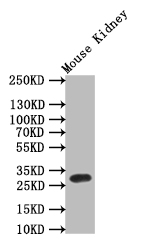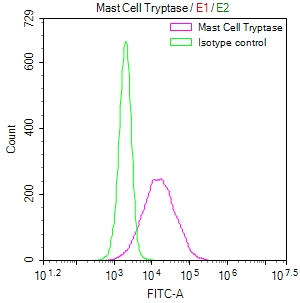The process of creating a recombinant monoclonal antibody against TPSB2 began with the immunization of a rabbit using a synthesized peptide derived from human TPSB2 protein. B cells were isolated from the immunized rabbit, and RNA was extracted from these B cells. The RNA was reverse-transcribed into cDNA, which served as a template for extending TPSB2 antibody genes using degenerate primers. The extended TPSB2 antibody genes were then incorporated into a plasmid vector and introduced into host cells for expression. Subsequent purification of the TPSB2 recombinant monoclonal antibody from the cell culture supernatant was achieved through affinity chromatography. The TPSB2 antibody was subsequently assessed for its utility in ELISA, WB, and FC applications, with specificity demonstrated toward human and mouse TPSB2 protein.
TPSB2 is primarily found in mast cells, which are immune cells involved in allergic and inflammatory reactions. The main role of the TPSB2 protein is to function as a protease involved in the degradation of proteins, particularly in the context of immune and inflammatory responses.







